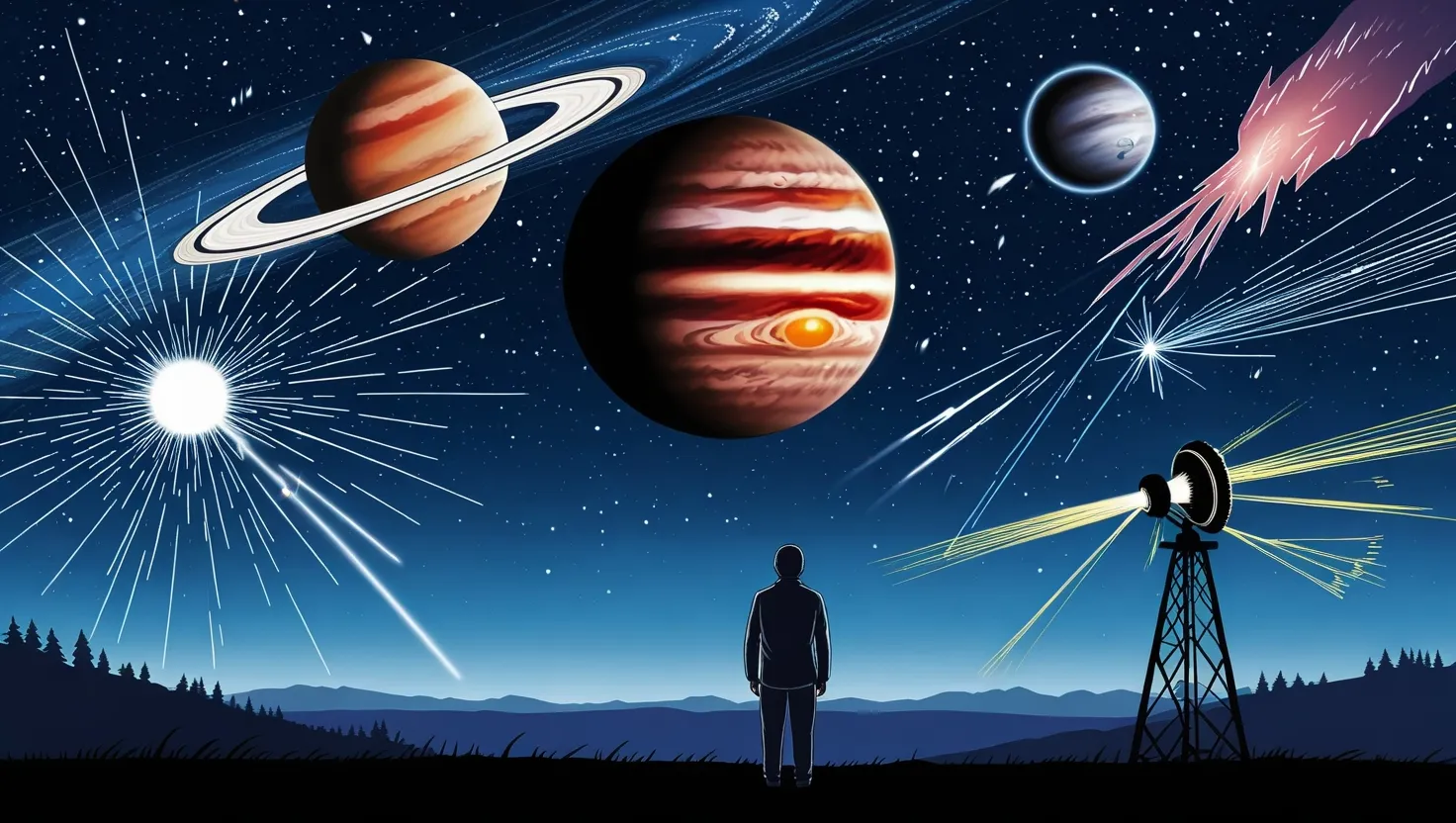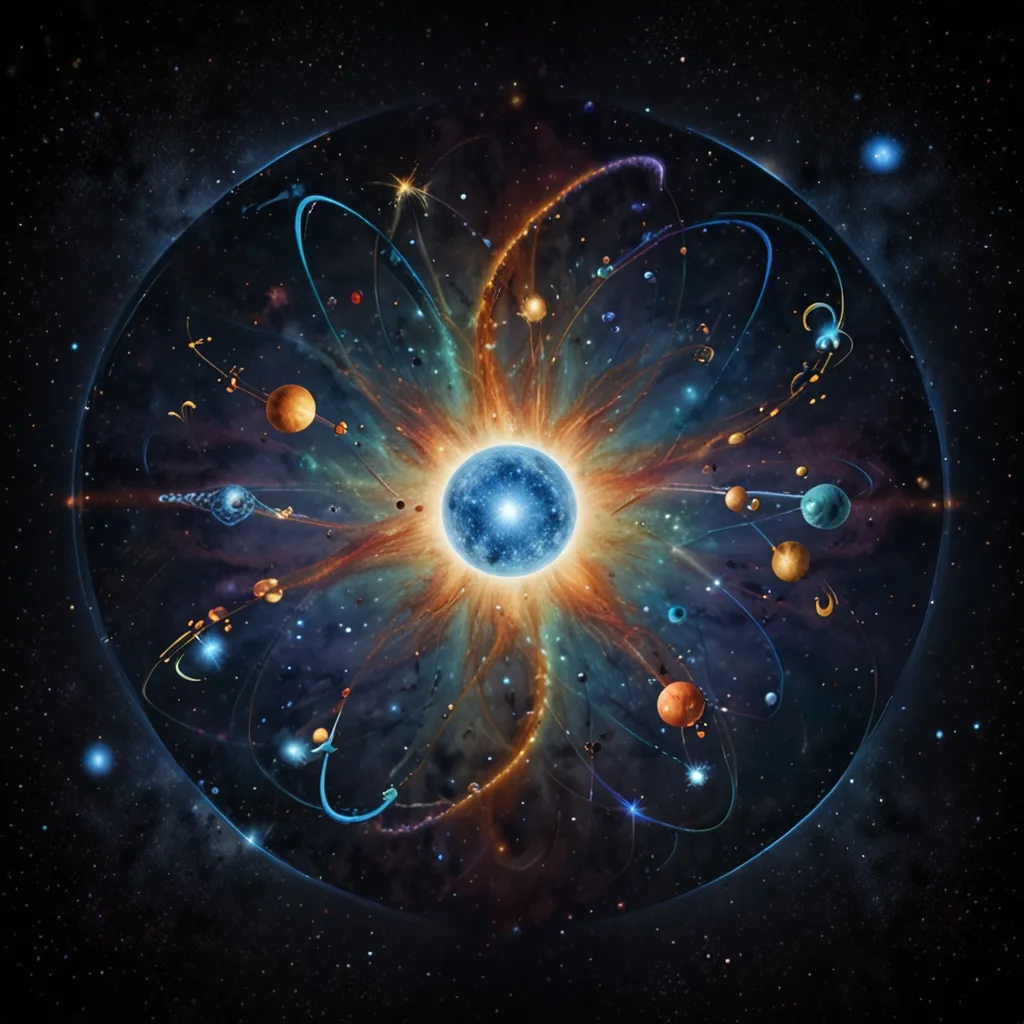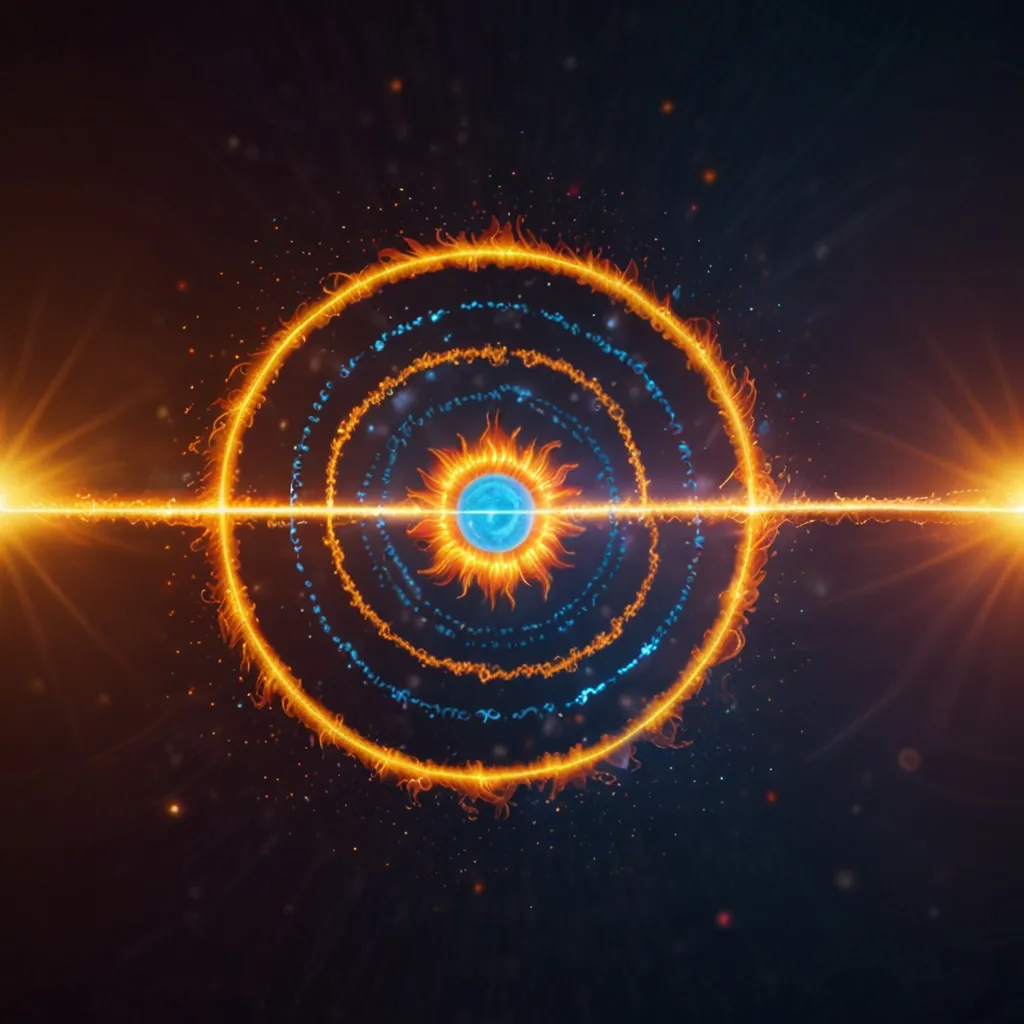Imagine staring up at the night sky, a vast canvas of mystery and wonder, where celestial phenomena challenge even the sharpest scientific minds. For centuries, the cosmos has presented riddles that remain unsolved despite technological advances and intellectual pursuits. Today, I want to talk about five such celestial phenomena that continue to baffle scientists and spark endless fascination. Let’s explore these marvels together, diving into their strange intricacies and quirks.
Jupiter’s Great Red Spot is perhaps one of the most iconic cosmic enigmas. This colossal storm system, larger than Earth itself, has raged for centuries. First observed in the 17th century, it should, by all accounts, have vanished long ago. Earthly storms dissipate quickly, drained of energy by friction and heat loss. So how has this Jovian tempest persisted? Theories suggest vertical flows within the storm may replenish its energy. Some scientists even hypothesize that it consumes smaller vortices in Jupiter’s atmosphere to survive. Yet the answers remain incomplete. What if the storm is performing some role we don’t yet understand, a mechanism unseen in terrestrial weather systems? And with the storm now shrinking at an increased rate, will it disappear within our lifetimes?
Moving closer to home, the phenomenon of ball lightning has defied explanation for generations. Picture this: a thunderstorm rolls through, and suddenly, a glowing, spherical object drifts through the air, sometimes floating into homes, passing through walls, and vanishing with a hiss. Is it a rare electrical phenomenon? A psychological illusion born of fear during storms? Or something stranger still? Experiments have recreated similar effects in laboratories, but the exact physics of ball lightning—how it forms, sustains itself, or why it behaves erratically—remains unknown. Could it be tied to conditions we rarely observe, combinations of magnetic fields and atmospheric elements?
“What would life be if we had no courage to attempt anything?” remarked Vincent van Gogh. Understanding these phenomena often feels like an act of bravery, a reckoning with the limits of what we can comprehend.
Another cosmic puzzle lies far beyond our atmosphere: ultra-high-energy cosmic rays. These particles arrive from the depths of the cosmos, smashing into Earth’s atmosphere with energies that dwarf even the most advanced particle accelerators. The “Oh-My-God” particle, detected in 1991, remains a stunning example, a subatomic particle hurtling through space at nearly the speed of light with unimaginable energy. Where do they come from? Black holes? Exploding stars? Or perhaps even sources we’ve yet to identify? Theoretical physics offers potential answers, but none fit seamlessly. How does the universe accelerate particles to such mind-bending speeds? Could this be nature’s way of demonstrating power on a scale that remains incomprehensible?
Then there are pulsars—spinning neutron stars that emit beams of radiation so regular they were once thought to be signals from extraterrestrial civilizations. Discovered in 1967, these cosmic lighthouses compress matter into densities that challenge the boundaries of physics. A teaspoon of pulsar material could outweigh the human population many times over. How can a single object possess such intense magnetic fields and retain stability while spinning hundreds of times per second? Pulsars also serve as cosmic clocks, their precision rivaling atomic timekeeping. What keeps them ticking so perfectly in a chaotic universe? Could pulsars eventually help us unlock secrets about spacetime itself? And might they still harbor surprises we haven’t imagined?
“Two things are infinite: the universe and human stupidity; and I’m not sure about the universe,” joked Albert Einstein. The humor underscores the weight of studying such profound mysteries—how often do we mistake our observations for understanding?
The final entry on this list, fast radio bursts (FRBs), is a relatively recent addition to astronomy’s catalogue of wonders. These fleeting flashes of radio waves emanate from galaxies millions of light-years away. Some have repeated, while others appear singular, each burst emitting energy equivalent to the sun’s output for years. What causes them? Magnetars, the remnants of collapsed stars, are a leading theory, but FRBs display behaviors that defy easy categorization. Could they be the death throes of stars, collisions of black holes, or even signals from distant civilizations? With every new observation, the phenomenon grows more complex rather than clearer. What secrets do they hold about the most violent processes in the universe?
As we ponder these cosmic puzzles, it’s worth asking: Why do we care? Why do we invest so much effort into understanding phenomena that seem so far removed from everyday life? The answer may lie in our innate curiosity, the drive to decode the universe and our place within it. Each mystery solved leads to new questions, new ways of thinking. And sometimes, the answers ripple back to Earth, improving technology or fostering insights into the laws that govern existence.
What is it about the cosmos that draws us so deeply? Is it the scale, the beauty, or perhaps the humbling reminder of how much we don’t know? These phenomena remind us that our perspective is limited—that the universe operates on levels we’re only beginning to glimpse. So as we study Jupiter’s storms, chase lightning-like orbs, and listen for whispers from dying stars, we’re not just looking outward. We’re exploring the boundaries of human understanding, questioning what it means to know something fully.
The universe remains a stage for the surreal, and we, its curious spectators, are left to wonder: How many more mysteries await among the stars? And when we finally find the answers to these celestial riddles, will those answers bring clarity—or reveal even deeper questions?






